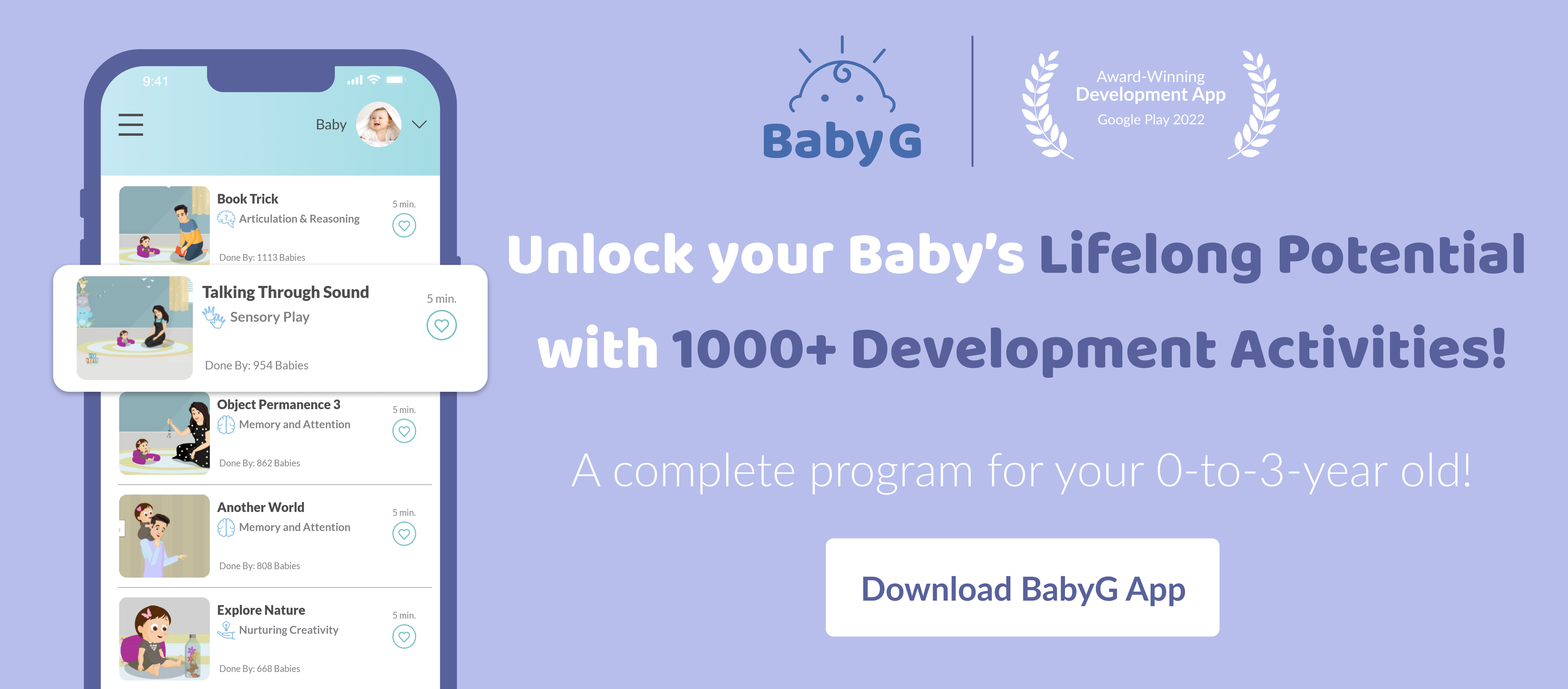
What Milestones Should A 2 Month Old Baby Have?
Physical Development Milestones For 2 Months Baby
Physical milestones are indicators that your little one is doing fine with their gross and fine motor skills and is also on track with their muscle development. For two months old physical milestones usually begin with self exploration. They are fascinated by their own little fingers and legs and waste no time to gnaw on them. Here are some of the other milestones they will achieve.1. Moving Arms and Legs
This month is the starting point when they start to use their arms and legs. No they can’t do much with it but they’ll move them around for sure. You’ll see them do this when they want to throw a fit or even when they get excited. Don’t worry about coordination as they have just begun to use them so the movement will mostly be random.Completion Rate on BabyG App: 96% Babies
Importance: This milestone is essential for the motor development of your baby.
What if my baby does not complete this milestone?
This is a major milestone, and everything from little to no movement is troublesome. If your baby seems floppy, they might have muscle weakness, which could be a symptom of hypotonia. Observe the pattern of movement in your baby's arms and legs. If there is a consistent pattern of being floppy or peculiar, seek medical advice from your pediatrician.
2. Holds Head Upright
When you put your baby on their tummies, you may see them holding their heads upright. If your baby is able to balance their head upright even for a few minutes,it is a sign that they are completing an important milestone. However, note that their muscles are still weak, and they’d keep it up only for a few seconds.Completion Rate on BabyG App: 90% Babies
Importance: If your baby is able to achieve this milestone, it means they are on track to develop their thoracic spine and neck muscles. It also means they are able to develop their shoulder girdle at a steady pace. These are things that help your baby support the head on the neck and they’ll only learn to do other things with it only if they can keep it upright.
What if my baby does not complete this milestone?
Infant head lag, aka not being able to hold up their head, is not serious until 3-4 months of age. So if your baby hasn't hit this milestone until now, it is completely normal. Atypical movements that require immediate attention for pediatricians include floppy or droopy heads when lifted or during the pull-to-sit maneuver.
3. Observes Faces
A lot is happening in their environment and at this age, your baby is at the peak of visual stimulation and is keen on observing things. If you notice that your baby stares, fixates on a particular thing and observes faces when you bring it close to them, your baby has hit this milestone. Those deep gazes at your face surely mean that your baby is observing you.Completion Rate on BabyG App: 90% babies
Importance: This is one of the crucial developmental milestones for 2 month old which indicates a baby's visual development. If your baby isn't making eye contact and observing things, then there could be troubles with visions which should be discussed with your pediatrician right away.
What if my baby does not complete this milestone?
Hitting this milestone is important because lack of observation can point toward vision impairment. Observation is also a key skill for developing focus in babies.
4. Reduced Palmar Grasp
Palmar grasp is a primitive reflex that causes babies to keep their hands clenched in a fist and grip onto things. Although palmar grasp is very important in the first month, a good sign of development is when it slowly reduces. This milestone is completed if you notice that the palm of your baby stays open for longer periods and a reduced palmar grasp.Completion rate on BabyG App: 75% babies
Importance: Palmar grasp lays the foundation for voluntary actions to pick up and hold objects. Only if it reduces and completely disappears by six months will your child be able to improve their fine motor skills.
What if my baby does not complete this milestone?
The palmar grasp weakens only with time so if your baby still shows signs of a strong palmar grasp, you don't have to be worried.
5. Takes Hands In Mouth
Bringing hands to mouth and sucking on them is the most common way of self soothing in babies. They may also touch their facial features which indicate self exploration. If your baby does the above, then they have achieved this milestone.Completion rate on BabyG App: 89% babies
Importance: Being able to bring hands up to their mouths and near their faces shows that muscular development is on track. Apart from this, they are also advancing their neurological reflexes.
What if my baby does not complete this milestone?
It’s best to talk to your pediatrician about developmental delays if you notice that your baby has not achieved this milestone yet.
6. Eye Tracking
If your baby is able to track objects when they are moved horizontally in front of them, then they have achieved this milestone. Since their vision is still pretty blurry, black and white or other contrasting objects will catch more attention.Completion Rate on BabyG App: 84% Babies
Importance: This milestone is important to understand if your baby has started developing their eye muscles. If there is no eye contact at all, it may indicate vision impairment.
What if my baby does not complete this milestone?
Since two-month- olds haven't fully developed their eye muscles, it is normal to see their eyes wander or cross while trying to track an object. You should definitely talk to your pediatrician if they don't make any eye contact with you or the object which is a problem as your baby may have trouble with eyes or even show signs of autism.
2 Months Baby Activties To Achieve Physical Milestones
1. Tummy Time
This is an effective activity to complete the “Holds Head Upright” milestone which challenges your baby to keep their head upright. Babies don’t really like tummy time because their muscles have only started to develop,and they may cry due to this. Start small and lay them on their tummy for only a few minutes. Over time, they will have better neck control and fully achieve this milestone.
Frequency: Couple of times everyday, for a few weeks
2. Object Grip
You can help your baby achieve the “Reduced Palmar Grasp” milestone using this activity. Choose a brightly colored rattle or toy that has thick handles and try placing it in your baby's palm. Your baby will be able to develop their palmar grasp beyond their natural curls by opening and closing their little palms.
Frequency: Once a day for 2-3 weeks
3. Legs Fold
This is a simple activity with which you can help them hit the “Moves legs and arms” milestone and improve your baby’s muscles and joints in the lower body. All you need to do is fold the legs and then gently push them towards the chest of your baby, straighten them, and repeat this activity.Frequency: Once a day for 2-3 weeks
If you find it difficult to do any of these activities you can check out video activities for your baby on the BabyG app.
Cognitive Development Milestones For 2 Months Baby
At 2 months old, your baby is growing tremendously in terms of their cognition. They can understand moving objects and also observes patterns. Look out for these cognitive growth milestones to know if your baby is on track1. Responds to Sensation of Air
Blowing on your baby’s face and other parts and seeing them smile and respond to you is a delight, but did you know this is a cognitive milestone as well? Most babies love when air is blown at them like a mini fan or while they enjoy a ride in a moving car.Completion rate on BabyG App: 94% Babies
Importance: Sensory activities such as blowing air is a great way to develop your little one’s brain and give them a picture of different types of sensations.
2. Responds to Temperature Change
Have you noticed that your baby responds to extreme changes in temperature like a fan thats cooling too much or suddenly if it's way too hot? If you put something cold or warm against their skin, they might cry or try to move away from it? This is a good sign because your baby is on track for cognitive development.Complete Rate on BabyG App: 91% Babies
Importance: Sensory play makes your baby more curious about the world around them and they will be able to differentiate more sensations.
3. Shows Plantar Reflex
This is one of those primitive reflexes that is very strong in the first few months of life and gradually goes away on its own. For a plantar reflex, your baby will curl their toes up if you slowly slide a finger across their feet.Completion Rate on BabyG: 87 % Babies
Importance: A normal plantar reflex shows the absence of any metabolic dysfunction or improper functioning of the neuromuscular system. The plantar reflex is very important for the baby's motor skills.
What if my baby does not complete this milestone?
The plantar reflex shows that your baby’s spinal cord and nervous system are working fine. The absence of it should be reported to your pediatrician immediately.
4.Shows Moro Reflex
If your baby feels startled or is placed from the lap onto a soft surface, they will immediately flare their arms and legs. This is a nervous system response called the Moro Reflex. It is fully developed by 30 weeks of pregnancy, starts to disappear by 3 months, and is completely gone around 12 months.Completion Rate on BabyG App: 91% Babies
Importance: The Moro reflex plays an important role in the proper functioning of the nervous system. Without this reflex in your baby's developmental stages, it might signal neurological damage, muscular weakness, or congenital malformation.
What if my baby does not complete this milestone?
If you don't see signs of moro reflex, you should raise the concern with your pediatrician. This is a vital reflex that allows healthcare professionals to diagnose any abnormalities in your baby early on.
5. Prefers Black and White Patterns
Your baby’s vision in the first few months is pretty blurry, and they can't tell apart a lot of colors either. They mostly see the world in black and white, and this is why it's important to show them flash cards or toys of the same color or any other contrasting color.Completion Rate on BabyG App: 80% Babies
Importance: This milestone is essential for improving your baby’s attention and focus, which will help them develop their eyesight.
What if my baby does not complete this milestone?
If your baby doesn't seem interested then chances are they are tired from overstimulation. Don't worry, you can try some other time to see if they respond. Again this is a milestone that they will achieve once they strengthen their eyesight which will happen over time.
2 Months Baby Activities To Reach Cognitive Milestones
Cognitive milestone can be achieved by doing 2 month old baby brain development activities such as
1. Tactile Sense
To complete the “Responds to sensation of air” milestone, lie your baby flat on their back comfortably and use a hand fan to blow air on their hands, face, and legs. Observe their expressions. If your baby smiles at this activity you know they have understood that blowing air is different than usual and will respond positively.
Frequency: 3-4 times during the week
2. Moro Reflex
You can cross the “Moro Reflex” milestone off your 2 month milestones checklist by this activity. Your baby will be startled and will throw up their arms and legs as you drop a rattle when they are asleep or make loud noises. This is a primitive reflex and should come to your baby naturally and should still be present at the age of 2 months.
Frequency: A few times to confirm the development
3. Checkerboard
You can get your baby to complete the “Prefers black and white patterns” milestone with this activity. All you need is a black and white checkerboard. Place the board on a wall closer to them or try hanging it as a dangling toy on their crib. This activity will help your baby focus and stimulate their brain with visual patterns.Frequency: Make this part of their daily routine
Social and Emotional Development Milestones For 2 Months Baby
Getting a smile from your little one could be the best start to your day and 2 months old will give you that for sure. The gradual development of these skills right from birth lays the foundation for strong social and emotional skills needed later on, from making friends to being able to connect with people.
1. Responds Positively to Soft Speech
You might have noticed that your baby likes being talked to in a low, soothing voice and often gives you a cheerful smile afterward. This is a major social and emotional growth milestone for your 2 month old bundle of joy. Often, they react positively to other gentle things like soft touches on their belly, palms, and feet.Completion Rate on BabyG App: 90% Babies
Importance: It is very important for parents to talk to their babies for social and emotional growth milestones. Parentese, which is also called baby talk, is necessary to instill a sense of security and comfort in your little one.
What if my baby does not complete this milestone?
You should check if the reason they aren’t responding to you is due to a lack of hearing. If your baby seems irritated and has colic, speak to your pediatrician to understand any underlying cause. Once they are at ease and feel secure around you they’ll surely give you that cute smile.
2. Recognizes Parents
Have you noticed that your baby is only calm when they are held by you or are around you? Although it may be exhausting to soothe them, this is a good sign. It means they recognise you and are there to soothe your baby, it also means that your baby now recognizes you and other family members, which is a vital growth milestone.Completion Rate on BabyG App: 89% Babies
Importance: Studies show that there is a strong correlation between the emotional bond between parents and baby and its positive effects on long-term mental health. Try to converse with your baby early on and develop a bond. While this may be instinctive for mothers, fathers might need to make a bit of an effort.
What if my baby does not complete this milestone?
It is okay if your baby doesn't completely recognize you at this point in time because they haven't completely developed their hearing and sight. If your baby doesn't recognise you by six months of age, raise your concerns with a pediatrician right away.
3. Shows Excitement Upon Touch
As a parent, there’s nothing more amazing than seeing your baby get excited when they try to touch your face and explore your lips and nose with their tiny little hands. Well, this is also a milestone.Completion Rate on BabyG App: 84%
What if my baby does not complete this milestone?
Your baby has only started using their fingers and hands and it may take a couple more weeks to reach this level of dexterity. So it's completely fine if they aren’t able to achieve it yet.
2 Months Baby Activities To Reach Social and Emotional Milestones
1.Love Them Through Physical Touch
Your baby can complete “Responds to soft touch” using this technique.The best way to reach these milestones is by talking to and lovingly touching your baby as much as possible. It helps you strengthen the bond and encourages them to respond to you.
Frequency: Everyday
2. Introducing New People
You can try this activity to complete the “Recognises familiar people” milestone. For them to get used to someone, you should try talking to your baby using certain expressions and exaggerating introductions like using high pitch and showing excitement on face while introducing your aunt or grandma. You can try phrases like “See who’s here? This is your aunt and she’s so much fun”. Babies learn from you and if you show a positive response while meeting someone then your baby will also follow your lead.
Frequency: As much as you can
Communication Development Milestones For 2 Months Baby
Your baby at 2 months old has started to get a little grip on things going around them and wants to respond to them. These milestones help kickstart your baby’s language and communicative abilities, so it's important to nurture them.
1. Looks Towards the Source of Sound
If your baby can slowly move the head towards the sides in response to a parent's voice or interesting sounds, then yay, they’ve completed a communication development milestone. Another way to tell is if your little one can follow the sound of a rattle toy or any toy that makes sound by moving their eyes towards it when it is held and shook on the slight left or right side of the face.Completion Rate on BabyG: 83% Babies
Importance: This milestone reassures you that your baby isn't having any hearing or vision problems.
What if my baby does not complete this milestone?
If your baby doesn't complete this milestone, you should check if they get startled by loud sounds and if they can track an object placed in front of them. If they fail these, then raise a concern with your pediatrician.
2. Shows Excitement for Certain Sounds
Is your baby obsessed with certain music or sounds and gets so excited that they throw their hands up in the air? Wow, then your baby has completed one of the milestones for a two month old! Try different songs to know what’s got your baby jamming.Completion Rate on BabyG: 83% Babies
Importance: This milestone assures you that your baby has no vision or hearing problems.
What if my baby does not complete this milestone?
As long as you know that your baby gets startled by music and other noises you should be fine. This is a milestone that is achieved over time.
3. Making Cooing Sounds
Aren't every 2 month olds adorable when they coo? If your baby is able to babble some sounds that may sound similar to vowel sounds like aaah oooh, then that means they are on track to achieve this milestone.Completion Rate on BabyG: 89% Babies
Importance: Cooing, babbling, or making related noises is important as they are learning to communicate with you. By exercising facial muscles, that are developing muscles which will help them start talking later on.
What if my baby does not complete this milestone?
If your baby hasn't made these sounds yet, then it’s completely okay. They’ll catch up in no time if you encourage them by talking. However, they should do so within four to five months, so keep an eye out for it.
4. Stops All Activities to Observe Sounds
If you play starling sounds and your baby stops doing whatever they were doing, be it sucking milk or gazing at you, it means they have completed this milestone.Completion Rate On BabyG App: 73% Babies
Importance: Your baby is doing great with their hearing and is learning how to be alert and observant.
What if my baby does not complete this milestone?
Your baby is still in the nascent stage of developing their hearing so chances are they are not interested in the sound or cannot differentiate unfamiliar sounds. It is completely okay if your baby hasn’t achieved this milestone yet.
2 Months Baby Activities To Achieve Communicative Milestones
1. Recognizing Voices
You can complete the “Able to differentiate pitch tone and rhythm in sounds” milestone with this activity. Talk to your baby on a daily basis using different expressions, pitches, and emotions to make them recognize you, and slowly you’ll notice them getting excited to hear your voice. The baby talk works, people.Frequency: Make this a part of their daily routine
2. Responding to Sound
If your baby finds the “Looks at the source of the sound” milestone difficult, you can try this activity. Use a rattle and shake it on their left and right sides. You would notice them turning their heads in the direction of sounds. It is an excellent activity to exercise their sense of direction. You can try this activity with different kinds of objects that make unique sounds such as bells or chimes and have fun seeing their amazed faces.Frequency: A couple of times a day for few weeks
3. Familiar Songs
This activity is a great way to complete the “Shows preference for certain sounds” milestone. Does certain music light up your little one's face? Play these music more often to help them recollect and recognise certain tunes differently from the others.Frequency: A couple of times a day for few weeks
What Should Be My Baby’s Weight, Height and Head Circumference at 2 Month?
Here’s a comprehensive list of growth measurements to track your baby’s weight, height and head circumference at 2 months, as these are important indicators of your baby’s health.
Average weight for 2 month boy: 5.6 kg/ 12.3 pounds/ 197 ounce
Average weight for 2 month girl: 5.1 kg/ 11.2 pounds/ 179 ounce
Average height for 2 month boy: 58.4 cm
Average height for 2 month girl: 57.1 cm
Average head circumference for 2 month boy: 35.9 cm
Average head circumference for 2 month girl: 35.2cm
2 Month Old Baby Sleep Milestones
2 month baby sleep hours are approximately 15.5 hours. Which is a lot, with each sleep cycle lasting between 1-2 hours. Although their sleep patterns are short and erratic, ensure that they get 7-8 hours of sleep during the day and night.
2 Month Old Feeding Milestones
The best markers of a good feeding schedule are healthy weight gain and diaper changes. Your baby should weigh in the range mentioned above and have 6-7 diaper changes a day. For definitive guidance, here is the two month old feeding schedule.
Breastfed babies: 6-10 feedings per day, each feed of 10-20 minutes
Formula-fed babies: 3-4 ounces (90-120 mL), 6-8 feedings per day
When To Worry About 2 Month Baby’s Progress?
Your baby may complete some of these milestones, if not all. However, you should talk to your pediatrician if you see these signs of developmental delay in 2 month old- Your baby isn’t smiling by 8 weeks
- No matter what they don’t calm down, even for a little while, when you pick them up to comfort them
- Either side of their body seems to be stronger than the other
- They’re still holding their fingers in a tight fist or are floppy or stiff
- Loud and sudden noises don’t startle them
- Poor nursing
How To Support My 2 Month Baby's Development?
2 months is the first time your baby starts to demonstrate more voluntary movements which lays the foundation for many such activities like holding onto toys, moving their body and so much more.
Between feeding and sleeping, you won't get much time to nudge your baby in the right direction for achieving milestones but when you do, you need to utilize the time for completing the crucial milestones, such as holding their head upright, recognising voices, observing face, etc.
One of the simplest ways to kickstart growth at 2 months is by frequently talking to them. Understanding the poop, pee and sleep patterns can tell a lot about your baby and logging them would be surely helpful. You can use a milestone tracker to identify any developmental delay and even if they are, there isn't anything that a little activity cant solve.
All of this is provided in the BabyG app in a super easy way for every parent to give their baby the best start. If at any point in time, you feel overwhelmed you can try joining a moms group to talk to people who are in the same boat as you.
Wondering what’s ahead of this exciting journey? Check out 3 month old milestones to know all about the next step in your baby’s progress.




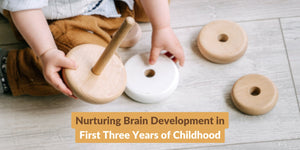
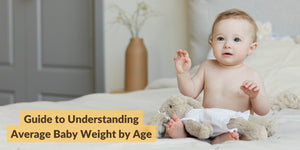
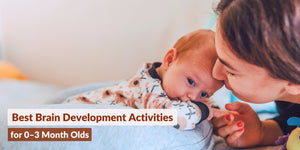

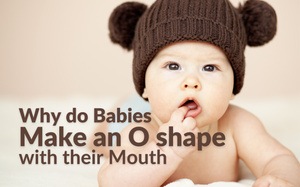
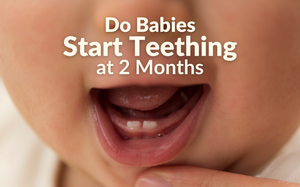
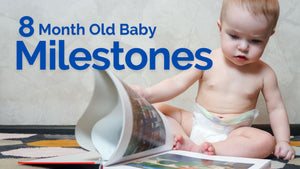


LEAVE A COMMENT